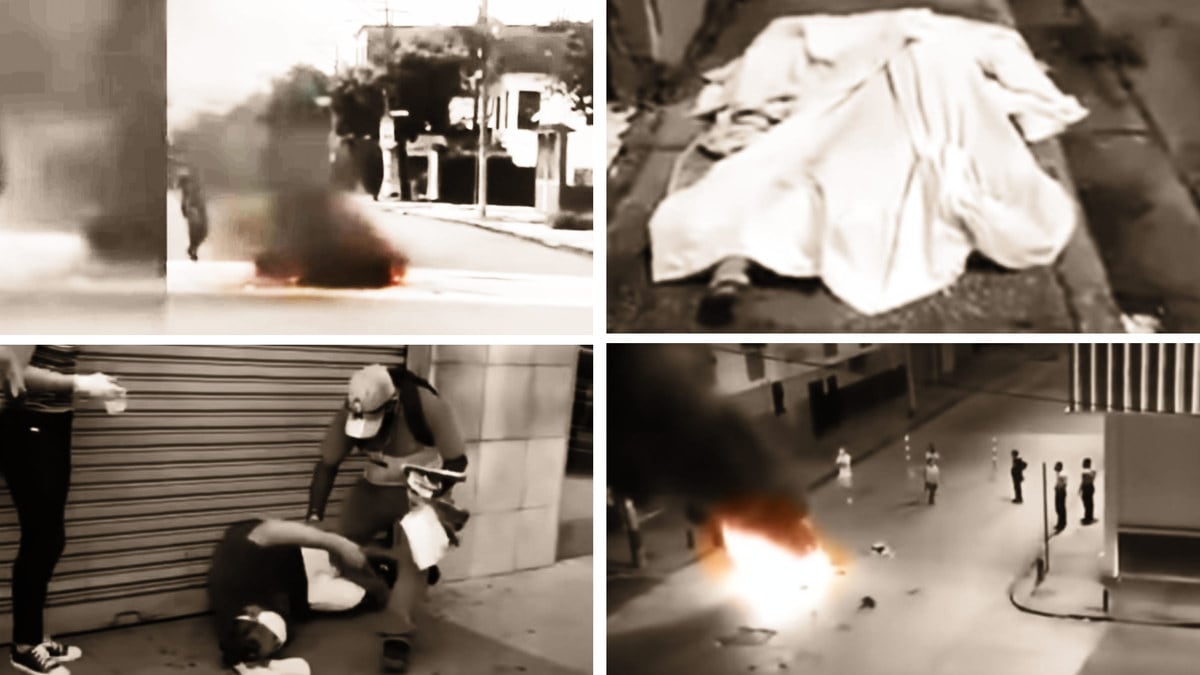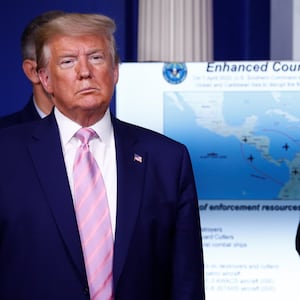CALI, Colombia—Images coming out of Guayaquil, a port city on Ecuador’s Pacific coast, are as grim as anything the world has seen since the COVID-19 pandemic began.
As the death toll has overwhelmed hospitals and morgues, bodies have been abandoned in the streets or left to decay in houses, cargo trailers, and parking lots. The smell of the exposed corpses sticks like bile in the throat, and flocks of vultures wheel above the city waiting their chance to feed on human carrion.
Cemeteries are far beyond capacity, so some of the dead are now buried in unmarked graves in outlying fields. Other cadavers are secreted out of the city by loved ones, disguised as sleeping passengers to slip through military checkpoints trying to stop the spread of the contagion.
Lacking the advanced technology and robust infrastructure of their First World counterparts, hospitals and health centers in Guayaquil have been swamped by climbing infection rates since late March, often leaving ordinary citizens to deal as best they can with dead and dying family members.
Videos allegedly showing bodies being burned in the streets are now widespread on social media and reproduced by news outlets across Latin America—although the provenance of those public cremation clips remains controversial, and journalists in Guayaquil say they are not what they seem. Fires were lit to draw attention to bodies, not to incinerate them.
There is no doubt that on Monday of this week the Ecuadorian government began issuing makeshift cardboard caskets, because traditional, more durable models have run out. And two new cemeteries with an estimated 10,000 graves are under construction, as experts predict the worst is yet to come, with the death toll likely to peak in late April.
“We are living in hell,” Blanca Moncada, a journalist with El Diario Expreso in Guayaquil, tells The Daily Beast. Moncada describes local medical facilities as resembling “war hospitals.” Such descriptions have been used in almost every hard-hit region, including New York City, but in Guayaquil the situation is still more grotesque.
“There are bodies stacked in freezers, corpses lining the corridors, even piled up outside the hospital,” she says. Reporters covering the crisis in Guayaquil have been particularly hard hit, with at least 14 infections and four deaths, including Moncada’s close friend and mentor at El Diario, who died a few days ago. She says she knows there are many in the city who are much worse off than white-collar workers like herself.
“At least we can lock down and work from home,” she says. “Many in the barrios don’t have that choice. For them it’s either go out to work or starve.”
Guayaquil, which is Ecuador’s largest city, has become the epicenter for COVID-19 in Latin America. As such, it has been described as a kind of bellwether for how the virus might impact other developing countries in the region—a gruesome harbinger of what’s to come when poverty meets pandemic.
As the crisis unfolds, U.S. citizens have been fleeing Guayaquil and surrounding areas, with special charter flights been arranged for them, according to a State Department spokesperson who declined to be named. “Overall, over 3,000 Americans have departed Ecuador since March 19, through 26 flights the Embassy facilitated through commercial airlines and State Department-chartered aircraft.”
Because embassy workers are already in quarantine, “only emergency consular services are available” in Guayaquil at this time, the spokesperson said. If conditions continue to worsen: “The consulate has a strong contingency plan for any necessary emergency evacuation.”
‘POOR VIGILANCE’
The original contagion is thought to have been brought by travelers returning from Spain and Italy in late winter. The Guayaquil airport is a major travel hub for surrounding districts, and early screening for the virus was marked by “poor epidemiological vigilance,” says Dr. Esteban Ortiz-Prado, an infectious disease expert at the University of the Americas in Quito.
Because passengers were only tested for high temperatures, many asymptomatic carriers slipped through. A lack of self-isolation protocols followed, failures which were in turn compounded by poverty, urban overcrowding, and a high number of senior citizens in vulnerable communities.
“When you add up all those factors together—Boom!—you get an explosion of infections,” Ortiz-Prado says. And that explosion eventually led to what he calls the “definitive collapse” of the public health system in the city.
Demographics and a lack of preparedness aside, some in Guayaquil feel the national government’s inadequate response has directly contributed to the scale of the outbreak. Critics say President Lenín Moreno is basing policy decisions on infection statistics that are unrealistically low, while also failing to call for a general lockdown, even as the outbreak escalates.
Here’s a quick rundown of the numbers:
As of Thursday, April 9, the official tally was 4,965 total cases and 272 deaths nationwide. However, government records in Guayaquil show at least 1,350 bodies were collected from streets and private homes in that city between March 23 and April 5, dwarfing the official stats for the entire country. The nation’s public health director also confirmed 150 coronavirus-related deaths in Guayaquil on April 8 alone.
Some of the discrepancy in numbers could be attributed to a lack of test kits and diagnostic equipment. But a deliberate willingness to look the other way as the body count rises might also be a way for President Moreno to delay implementing the kind of full quarantine measures that have proven effective—although sometimes politically unpopular—in other countries.
“We have a partial quarantine right now,” says epidemiologist Ortiz-Prado, with businesses open and people allowed out on the streets from five in the morning until two in the afternoon each weekday.
The lockdown “definitely needs to be stronger in Guayaquil and elsewhere,” he says. “We need to keep people from going out except to buy necessities.”
But keeping people under strict quarantine is easier said than done in the many poverty-stricken barrios around Guayaquil, where daily existence remains a hand-to-mouth struggle. Indeed, such precarious living conditions are common throughout Latin America, and will pose grave challenges to public health officials as the pandemic unfolds.
To its credit, Moreno’s government has already begun to distribute a stipend of $60 per month to workers in the informal economy, but Moncada says that’s not nearly enough to feed married couples and families.
“The people keep going out,” says Guayaquil mayor Cynthia Viteri Jiménez in a recent interview with Univision. “People chase the police with stones and knives [when they try to enforce the curfew]. In some sectors they just don’t want to realize the magnitude of what is happening in Ecuador.”
RISK FACTORS
One of the lessons other countries might want to learn from Ecuador’s unfortunate example is to prevent “the rapid spread of disinformation,” says Ortiz-Prado.
“Countries must control dangerous messages that circulate in social media in relation to the quarantine. Here in Ecuador, for example, there are people with millions of followers on Instagram who say: ‘Nothing is happening, go out into the streets. Nothing will happen to you,’” he says. “This has to be considered a major risk factor.”
While some in Guayaquil mislead the public by denying actual dangers, others have erred on the other side of the truth—sensationalizing human suffering by failing to fact check in order to generate click bait.
“There have been news outlets everywhere saying they were burning corpses in the street, but this did not happen,” says El Diario’s Moncada. Instead of funeral pyres, she says, the viral videos actually show signal fires.
“What they did was burn the furniture, the coffin, or the belongings of the deceased. Those were desperate acts to get the authorities to come quickly to remove the bodies. They left the corpses outside their houses and they burned tires and furniture hoping to get a response. To get help,” she says.
Other forms of deception and intimidation indicate just how severe the breakdown of society has become. For example, workers in a Guayaquil morgue are now being investigated for extorting grieving families, demanding bribes in exchange for returning their loved ones’ bodies.
Nor has the medical community been spared. At least 10 doctors in the city have died, and an estimated 1,600 more health-care workers have become infected, largely due to the lack of masks, gloves, and gowns. Yet those who speak publicly about shortages say they’re being threatened by superiors who want them silenced.
“The doctors I’ve interviewed are desperate due to the lack of supplies,” Moncada says. “But if they complain they know they risk getting fined, or even permanently fired, by the hospitals.”
Ortiz-Prado says he also worried about dwindling stockpiles, and he hopes eventually “developed countries like the U.S. could support us by sending resources like test kits, medical experts, and personal protection equipment.”
Above all he stresses the need for developing nations in Latin America to adopt a unilateral approach and work together to prevent the outbreak from spreading.
“The region is very permeable to the infection and with a high morbidity rate,” he says, by way of advocating for a comprehensive, region-wide strategy.
“We can’t just try to control the outbreak in one country and leave people to die in another.”







